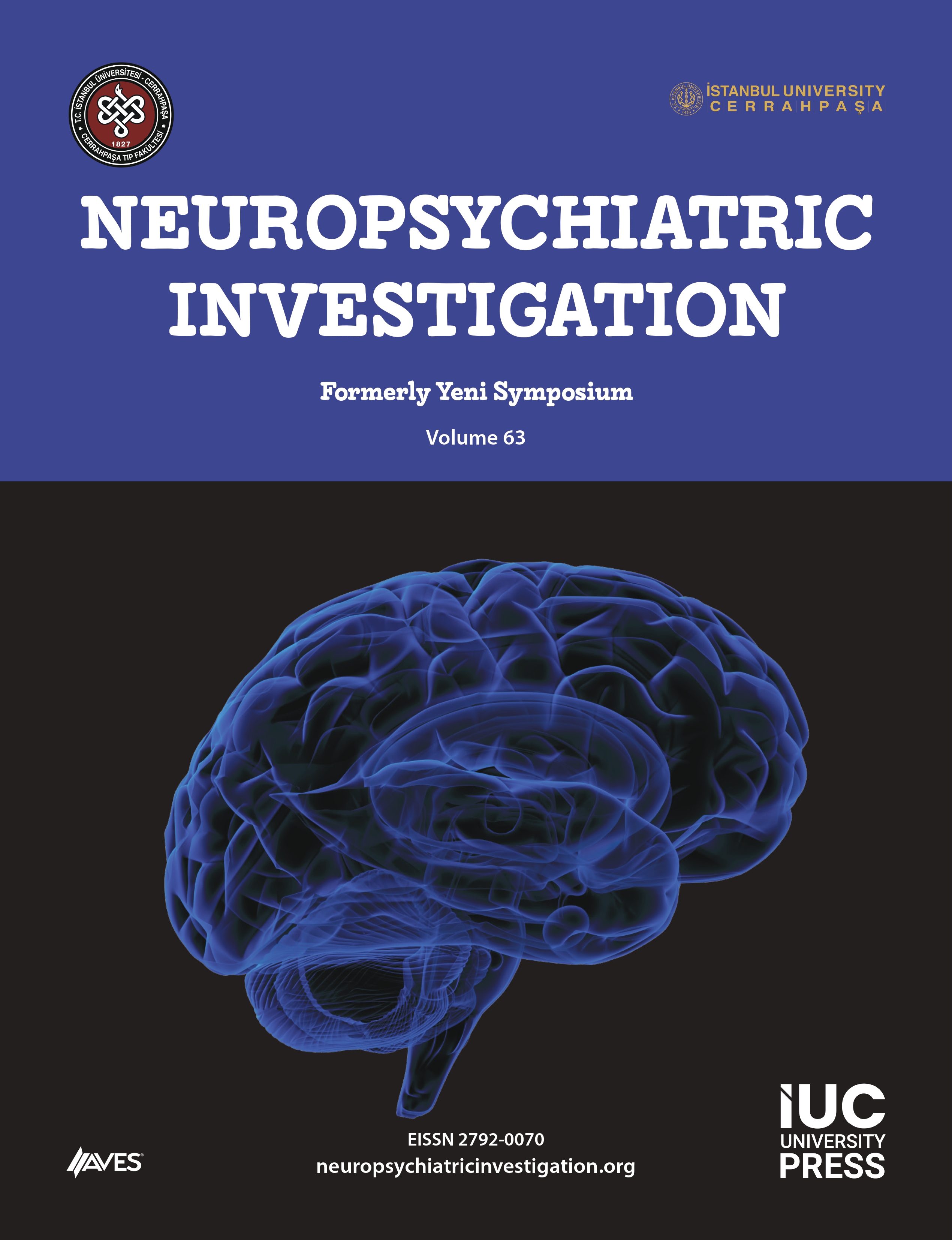Objective: Bipolar disorder (BD) is a chronic disease of 1% in the population although the prevalence in the elderly is low as 0.1%. The prevalence and incidence of major depression doubled after the age of 70-85. The aim of this study was to investigate sociodemographic and clinical characteristics of geriatric inpatients with bipolar disorder and unipolar depression (UD).
Methods: In the study, demographic and clinical characteristics of 65 years and older patients with BD and UD who hospitalized in Bakirkoy Research and Training Hospital for Psychiatry, Neurology and Neurosurgery were compared through medical records. Patients diagnosed with substance/medication-induced mood disorders, mood disorders due to another medical condition or dementia, delirium were excluded from the study.
Results: The average age of patients is 69.3 years. The study included 93 patients; 51 patients (54.8%) are diagnosed BD, 42 of them (45.2%) are diagnosed UD. The age of onset was found 59.21 years for UD and 41.33 years for BD (p=0.000). Hospitalization ratio in the patients with suicidal ideation was 78.6% (n=33) in UD and 17.6% (n=9) in BD (p=0.000). While 20 of UD patients (47.6%) had suicide attempt at least once, 12 of BD patients (23.5%) attempted suicide before (p=0.03). The drug inadherence ratio in BB patients was found 51.0% (n=26), while it was significantly lower in UD patients (26.2%; n=11) (p=0.000). Antipsychotics were used in the treatment with 100% in BB group (n= 51) and 76.2% (n=32) in UD group (p=0.000).
Conclusions: Important clinical differences were detected between geriatric unipolar and bipolar inpatients.




.png)